Resources
Floodplains
In 1978, Pennsylvania passed the Floodplain Management Act (Act 166). Traditionally the responsibility of the Department of Community & Economic Development, Act 166 requires that a municipality pass and enforce an ordinance to meet the requirements of the Act and the National Flood Insurance Program (NFIP).
The York County Conservation District does not currently have any duties and responsibilities under this program, nor does it have any enforcement responsibilities.
For more information about Floodplain Management, contact your local municipality or the York County Planning Commission.
Resources

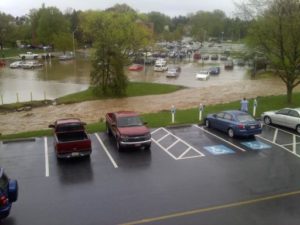
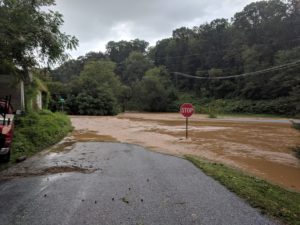
Groundwater
The Problem
More than 3 million Pennsylvania residents rely on drilled wells, hand-dug wells, cisterns, and even roadside springs for drinking water. Pennsylvania is one of the few states in the country without statewide regulations governing private well location, testing, and treatment. Water pollutants in water that can affect health often show no signs of taste, color, or odor.
The Solution
Your drinking water begins as rain or snow and ends at the tap in your home. With about 20,000 new wells being drilled each year and rapidly changing land use, information on proper maintenance of private water supplies becomes a necessary part of a homeowner’s education. Private water systems should be tested annually for total coliform bacteria. Independent water testing by a certified laboratory can help homeowners avoid purchasing unnecessary water treatment equipment.
Resources
- Pennsylvania’s Groundwater
- Pennsylvania Groundwater Data
- Quick Guide to Groundwater in Pennsylvania
- Groundwater Protection
- Master Well Owners Network
- This OLDS House Well Booklet
- PSU Coop Extension Private Wells PowerPoint PDF
For more information about Groundwater Wells, contact Penn State Extension at 2401 Pleasant Valley Road, Suite #101, York, PA 17402. Phone: (717) 840-7429. Web http://york.extension.psu.edu/
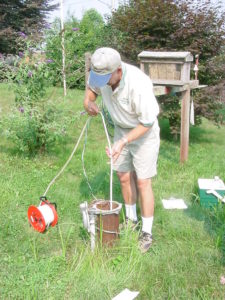
On-Lot Disposal Systems
The Problem
With country-living comes responsibility. Chances are that you have chosen to live in the country because you cherish the peace and quiet, the wide-open spaces, and the beauty of nature. However, with this enjoyment and independence often comes responsibility. Most drinking water supply and sewage disposal in rural areas of York County are done on-lot. As a property owner, you are responsible for maintaining your drinking water well and septic systems. Understanding how they are built, work, and how to keep them operating effectively and efficiently is good for your family’s health, your household budget, and the environment. Replacing these systems can be expensive. If you own one of the thousands of septic systems in this county, someday you may have problems with it. Effluent (wastewater from the septic tank) may back up into your plumbing or pond on your lawn. Besides being unsightly, a nuisance, and the cause of health problems, failing systems are often difficult and costly to fix.
The Solution
York County residents are invited to request a “Managing Your On-lot Disposal System” workshop in your community. The York County Conservation District sponsors these programs each year in the spring and fall featuring leading local experts in septic system design, operation and maintenance, and sewerage regulation and enforcement. The program lasts approximately 2-hours. Homeowners will have the opportunity to get basic information about septic system design, location, and construction; get expert advice on how to properly operate and maintain them, and learn about whom to call for help with a failing septic system. Bring your questions for our expert panel to answer.
Resources
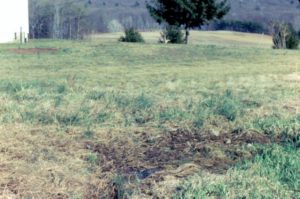


Ponds
The Problem
Ponds are frequently used in several ways to satisfy more than one objective. For example, having water available in the pond for fire protection may satisfy one objective without interfering or conflicting with other objectives such as swimming or fishing. Multiple-use ponds are fine as long as the uses are compatible. When conflicting or incompatible uses are desired, it is necessary to assign priorities to the owner’s objectives. For example, the objective of providing for swimming may conflict directly with the objective of having water available for irrigation. Irrigation needs may lower the water level to a point where swimming is impossible, at a time when swimming is most wanted. For this reason, you should list and prioritize specific objectives for your pond.
The Solution
Assessing pond resources is a critical component of setting objectives. Through inspection and assessment of the pond structure, watershed, water sources, and ecology, you can ensure that the pond resources are adequate for your objectives.
Resources
For more information about Ponds, contact Natural Resources Extension 320 Forest Resources Building, University Park, PA 16802. Phone: 814-863-0401. E-mail rnrext@psu.edu. Web http://rnrext.cas.psu.edu/.
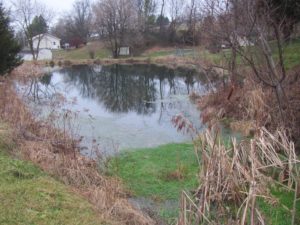

Stormwater
The Problem
Do you ever think about what happens to a drop of rain that falls onto the ground? It may land on a tree and evaporate; it may land on a farm field and be absorbed into the soil; or it may land on a rooftop, driveway, or road that travels down the street into a stream or storm drain. Any precipitation in an urban or suburban area that does not evaporate or soak into the ground, but instead pools and travels downhill is considered stormwater. Stormwater is also referred to as urban stormwater runoff and polluted runoff. Increased development across York County’s watersheds has made stormwater runoff the fastest-growing source of pollution to the creeks, river, and the Chesapeake Bay.
The Solution
Urban stormwater Best Management Practices (BMPs) are designed to prevent sediments and other pollutants from running off the land during and after construction. They include:
- Adopting and implementing stormwater management ordinances that control both the quantity and quality of stormwater runoff.
- Adopting open space policies that encourage naturally vegetated areas and minimize impervious areas such as parking lots, streets and roads.
- Adopting riparian stream buffer ordinances that encourage vegetated and forested buffer areas along streams and other water bodies.
- Using structural and vegetative practices during construction such as sediment basins, silt fencing, and temporary gravel construction entrances.
- Using post-construction BMPs such as detention basins, constructed wetlands, grassed waterways, sand filters, retention ponds, municipal street sweeping, storm sewer inlet filters, and oil/grit separators.
- Implementing good housekeeping practices at home and work such as proper lawn care, the use of low-phosphate detergents, and the proper disposal of household chemicals.
Resources
- Smart Growth 101
- Stormwater 101
- Managing Your On-Lot Stormwater
- DEP Stormwater BMP Manual 12/2006
- Rain Barrel PowerPoint PDF
- Rain Garden PowerPoint PDF
- Homeowners Guide to Stormwater BMP Maintenance
- Department of Environmental Protection’s Citizens Resource page.

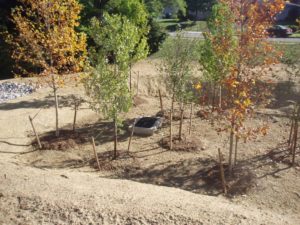
Watersheds & Wetland Education
What We Offer
The programs in this guide are available to York County students and residents. All of the programs are designed to address the PA Department of Education Environment and Ecology Standards including:
- 4.1 Watersheds and Wetlands
- 4.2 Renewable and Nonrenewable Resources
- 4.3 Environmental Health
- 4.4 Agriculture and Society
- 4.5 Integrated Pest Management
- 4.6 Ecosystems and their Interactions
- 4.7 Threatened, Endangered and Extinct Species
- 4.8 Humans and the Environment
- 4.9 Environmental Laws and Regulations
All of the programs above are specifically designed for grades 4, 7, 10, and 12. Each program can be individually tailored to meet your needs. If you do not see a topic in the guide that you would like offered, please contact the Watershed Specialist below to discuss the possibility of creating a program.
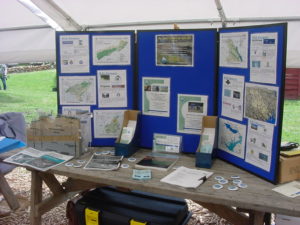
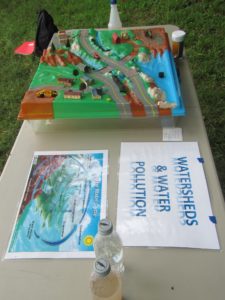
Program Scheduling
To schedule a program, contact the Watershed Specialist below. Unless special arrangements are made, programs are offered Monday through Friday, 8 AM – 4 PM. Before writing or calling, please have several dates and times in mind. Please notify us immediately to postpone or cancel the program.
Program Costs
A nominal donation of $35 per hour is requested which assists with program development and delivery. Special half-day (3 hours) and full-day (6 hours) program rates are $100 and $180, respectively. Additional fees for special materials needs/purchases on a case-by-case basis.
For more information about and/or to schedule your Watersheds & Wetlands Programs, contact the District at (717)840-7430.
